

Marlow in Apocalyptic Acid World
Marlow is a platformer heavily inspired by Super Mario, and copying its main mechanics. You are led into a not so far away future filled with Nuclear Waste, Flooded lands, Acid rain, and Dystopian societies.
Marlow é um jogo de plataformas inspirado em Super Mario, e copiando suas principais mecânicas. Você é transportado para um futuro não tão distante e repleto de lixo nuclear, terras alagadas, chuva ácida, e sociedades distópicas.
Key features:
- Simple platformer gameplay / Jogabildiade simples
- 5 Worlds divided in 5 Bosses and 20 stages / 5 Mundos
dividios em 5 Chefões e 20 estágios
- Limited lives but Infinite continues / continues infinitos
- A hardcore chalenging game / Um jogo desafiante
- Original Chiptune Sound Track / Trilha sonora 8-Bits
- A glimpse of our dying future / Umvislumbre de um
futuro moribundo
- It's a free game / É grátis, então não perca tempo...
Download Links:

Year: 2016
Version: 1.0.1
Engine: ARGS
Genre: Platformer
OS: PC Windows
Language: English
Did you liked my game? Consider donate any amount clicking on the Donate Button.
Gostou do jogo? Doe qualquer valor pelo botão "Donate" via Paypal ou por transferencia PIX

PIX para doar qualquer valor:
(clique para ampliar a imagem)

Gameplay Screenshots
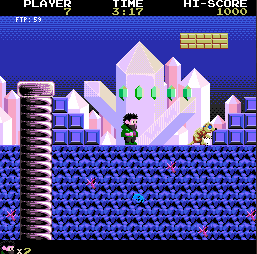

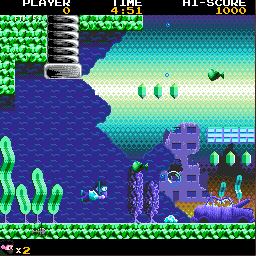
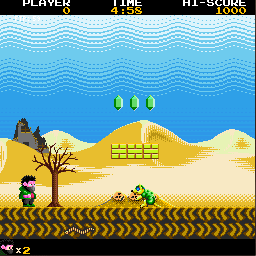
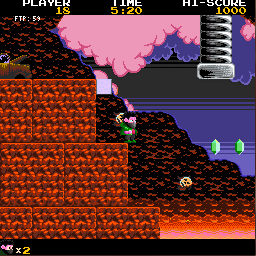
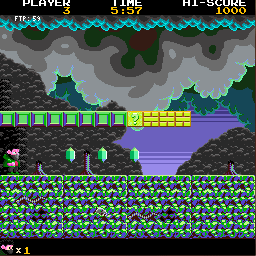
Cd covers and inlay on my blog: http://diarioartografico.blogspot.com.br/p/marlow-in-apocalyptic-acid-world.html
About my motivations in developing this game
Something that bothers me a little in current action games is that they have too much text (or speaches). I believe that for you to build the narrative of a game of this type (either platform, shooting, etc.) the text is merely incidental. Another thing that bothers me is the excess and exclusivity of "game universe" references: games that only refer to other classic games, with little dialogue with culture in general, and become a caricature of stereotypes of their source of inspiration.
But let us learn from the classics, take a look at the example of Super Mario from NES: the game has very little text, mostly just the famous phrase "Thank you Mario But the princes is in another castle!". Of course, in part, the producers made this due to the little storage space technology of the time. But that does not stop us from realizing that the text is not necessarily one of the most exclusive properties of the game as a language (not in action games in general). So when creating the assets of my game, their environment, characters, their motivations and interactions with this world, I tried to translate this contents in images and sounds for the game.
Another observation is about the choice of style: a game that copies the main mechanics of Mario game. In part, I made the challenge of adapting the ARGS (Arcade Game Studio) to a game like that. The ARGS was not planned for a game like Mario, so I had to "play" with their functions, the interaction between the "actors", until I reach a mechanic similar to that of Mario. And the other motivation is the simplicity but effectiveness of this type of game as "game". Here, the "game factor" is very interesting: as few buttons (the jump serves both to overcome the scenario obstacles and to kill most of the enemies) and with well-defined interactions (pick up items, break blocks, etc.), the learning curve of the player is much shorter, and he quickly learns what to do, how and when interact with elements on screen, making that his interest in the game itself is not lost in the first minutes.
Finally, the creation of content tried to talk the elements of my repertoire in games (especially Mario), with other repertoires and references of cinema, literature, music. The player may not realize (and are not required to realize), but these things appear in the title, names and look of the characters and items. For the indie scene, my inspiration was "Maldita Castilla", from Locomalito, which does an excellent job in took references of classic games (especially Ghouls and Ghosts), but adds new narrative elements drawn from a literature and historical research. "Maldita Casilla" manage to not become a exaggerated caricature (even more exaggerated than) of Ghols and Ghosts, and updates that game style to an original content.
Well, this was my second attempt to game in which endeavored more, I hope I have at least managed to make a fun game.
Sobre minhas motivações no desenvolvimento do jogo
Algo que me incomoda um pouco em games de ação atuais é o excesso de texto. Acredito que para você construir a narrativa de um game deste tipo (seja ele de plataforma, de tiro, etc) o texto seja meramente acessório. Outra coisa que me incomoda é o excesso de referências autofágicas: games que fazem referência apenas a outros games clássicos, com pouco diálogo com a cultura no geral, e se tornam uma caricatura dos estereótipos de sua fonte de inspiração.
Mas vamos á questão do texto, vejamos o exemplo de Super Mario de NES: o game tem muito pouco texto, apenas a famosa frase "Thank you Mario! But the princes is in another castle!". Claro que, em parte, os produtores fizeram opções devido ao pouco espaço de armazenagem da tecnologia da época. Mas isso não nos impede de perceber que o texto não é necessariamente uma das propriedades mais exclusivas do game como linguagem (não em games de plataformas e ação). Então, ao criar meu game, seu ambiente, personagens, suas motivações e interações com este mundo, tentei ao máximo traduzir este conteúdo nas imagens e sons do game.
Outra observação é a respeito da escolha do estilo: um game que copia as principais mecânicas do game Mario. Em parte, fiz pelo desafio de adaptar o ARGS (Arcade Game Studio) a um game do tipo. O ARGS não foi planejado para um game como o Mário, então tive de "jogar" com suas funções, a interação entre os "atores", até conseguir uma mecânica semelhante á do Mario. E a outra motivação é a simplicidade mas efetividade desse tipo de jogo como "game". Aqui, o "fator game" é muito interessante: como poucos botões (o pulo serve tanto para superar obstáculos do cenário quanto para matar boa parte dos inimigos) e com interações bem definidas (pegar itens, quebrar blocos, etc), a curva de aprendizagem do jogador fica muito mais curta, e ele rapidamente aprende a jogar, fazendo com que seu interesse pelo game em si não se perca logo nos primeiros minutos, algo que percebi observando crianças jogando meu primeiro game, As aventuras de Zé Baldinho.
Por fim, na criação do conteúdo tentei dialogar os elementos de meu repertório em games (em especial do Mario), com outros repertórios e referências do cinema, literatura, música. O jogador pode não se dar conta (e não é obrigado a se dar conta), mas estas cosias aparecem no título, nomes e visual dos personagens e itens.
Bom, esta foi minha segunda tentativa de game na qual me empenhei mais, espero ter ao menos conseguido fazer um game divertido.
